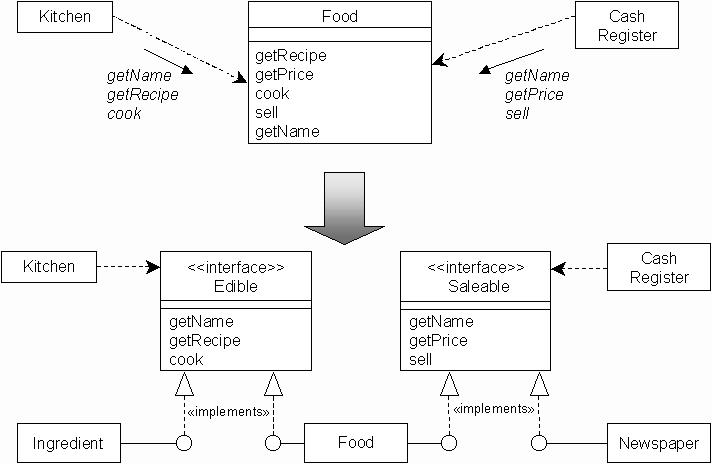CS3340: Intro OOP and Design |
||||||
|
Coupling
Types of Modular Coupling
In order of desirability
- Data Coupling (weakest most desirable)
- Control Coupling
- Global Data Coupling
- Internal Data Coupling (strongest least desirable)
- Content Coupling (Unrated)
|
Data Coupling
|
||
|
Control Coupling
Problem: A needs to know the messages it can pass to B. A Solution:
|
||
Global Data Coupling
|
||
Internal Data Coupling
|
||
Lexical Content Coupling
|
Decoupling a Design
 |
Problem: both Kitchen and Cash Register use Food class...too coupled to very different useages.Solution:
|